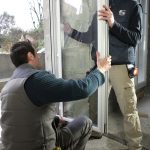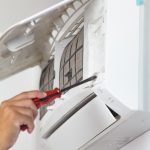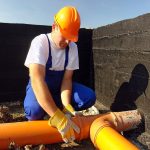At one time, nearly all large structures were designed and supported by immense masonry walls that could reach up to 10 feet thick or more. This would keep the water from penetrating the interior. In addition to that, the thickness of the stone was impervious to the moisture.
Today, however, the exterior walls of commercial construction are measured in inches rather than feet and are extremely sensitive to the moisture. Some hi-rise structures have exterior walls as thin as 1/8 inch. This causes a problem properly maintaining an effective weatherproof envelope. In today’s modern and high-tech world, materials have been created in response to these high-tech building techniques. waterproofing walls with one of several different materials can be the answer to those menacing moisture problems.
Watertight
Keeping a building watertight is essential to the life of any structure. Water can be the single most damaging element to a building’s facility. Left unattended, these problems become even more relentless. Water will first damage a building cosmetically, then structurally and then without the proper care and attention, by the time water damage is visible on the interior of the building, its damage could be expensive due to the structural damage to the building. To say the least, it could be extremely costly to repair.
Being proactive in protecting your investment, as well as correcting the problems that may be overlooked by time will maintain your structures and be the best costly savings for your business. Waterproofing walls and keeping the building watertight is essential.
Seal the Deal
Most molds need 24-48 hours of moisture to begin to grow. Therefore, if the material in your structure is wet for more than 24 hours, then you run the risk of mold starting to grow. Another factor to consider is mold prevention.
Stopping mold from surfacing and coming back is only done by fixing the water leaks or the moisture source. Mold commonly grows out of sight behind walls in the wall cavities. These spaces often contain pockets of humid, moist air. Mold loves to multiply and spread like wildfire. Waterproofing walls is always less expensive when you do it right the first time.








